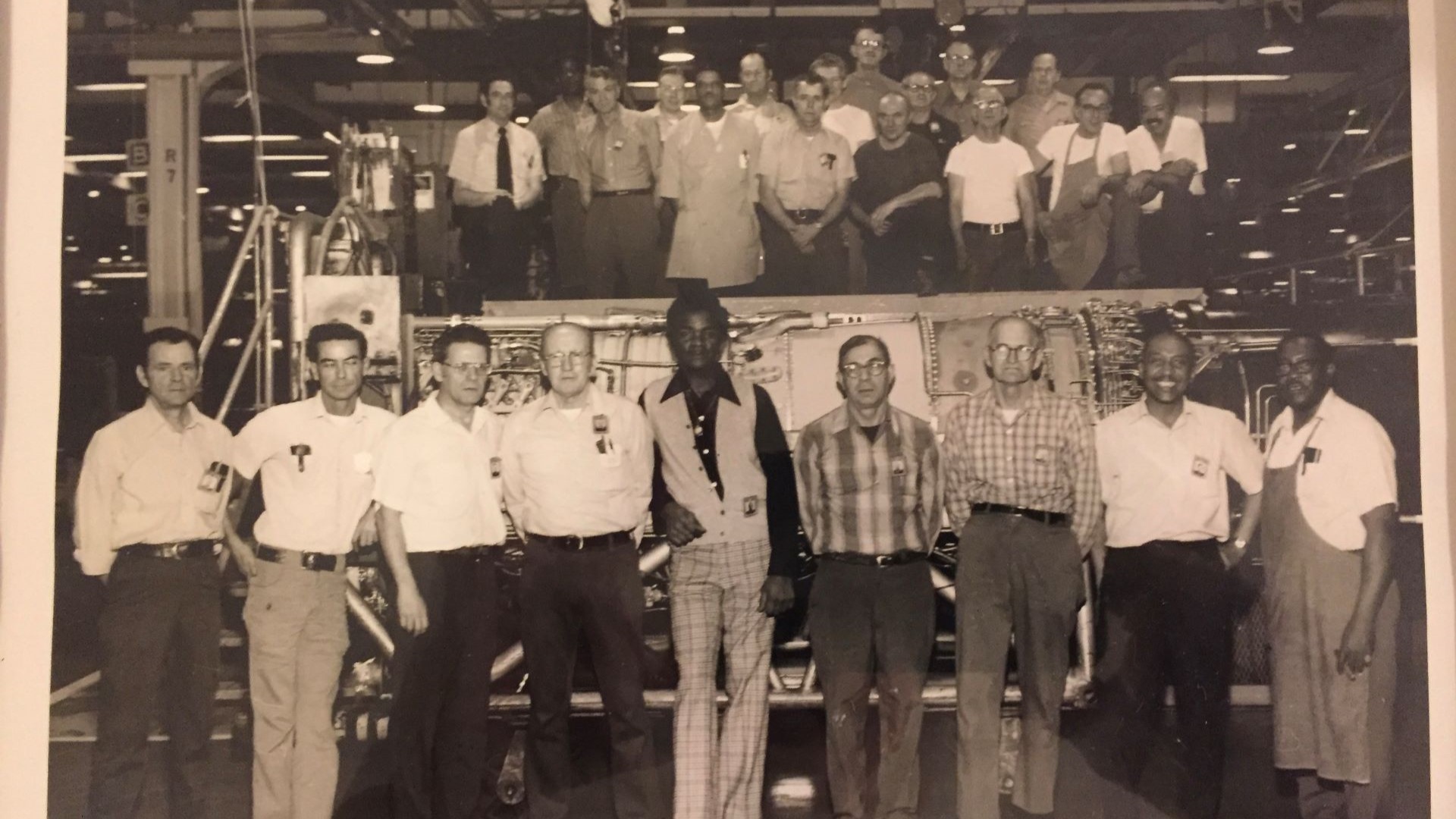How Mel Summe Inherited His Father’s Jet Age Legacy at GE Aerospace
October 02, 2024 | by Jay Stowe
When the weather starts to cool down in early fall, and the major league pennant races heat up, Mel Summe can’t help but think of his father. The senior Summe, who also went by Mel, spent most of his working life in Evendale, Ohio — first as a “lead man” in the surface grinding department at the Wright Aeronautical Corporation plant from 1941 to 1945, helping to build Wright Cyclone and Whirlwind engines for the United States’ war effort, then later as a quality control inspector at GE Aviation for 30 years, where he fell in love with jet engines. But his first love was baseball.
“He used to say he wished he’d saved his baseball cards for me,” says Summe, who currently serves as the senior specialist overseeing service bulletins for the CFM LEAP* engine program. No doubt his dad had a baseball card collection to beat the band.
Summe, who grew up and still lives on the west side of Cincinnati, says his father used to talk about taking the streetcar as a teenager from Westwood down to Crosley Field to attend Cincinnati Reds games. Back then, Summe says, “you could sit in the sun deck or moon deck at Crosley Field for a nickel.” This was in the 1930s, when the Reds went from cellar dwellers to having a hot team in the span of a few years.
How avid a fan was Mel Sr.? He was in the stands at Crosley Field on May 24, 1935, to see the Reds play the Philadelphia Phillies in professional baseball’s first night game — for which GE provided the lights. (Final score: Reds 2, Phillies 1.) And he witnessed the first of Johnny Vander Meer’s back-to-back no-hitters on June 11, 1938. Summe still has his father’s brown leather baseball glove, autographed by Elmer Riddle, who pitched for the Reds in the 1940s.
With a draft classification that made him “necessary to national defense,” Mel Sr. worked at Wright Aeronautical throughout all of World War II, until VJ Day, when news came of Japan’s surrender. Then things changed. “Dad said he went to work the morning of August 14, 1945, and everything was fine,” Summe recalls. “[Then] VJ Day happened, and after lunch the supervisors went around and pulled all the 220-volt power switches on all the machinery and told everyone ‘Go home, the war’s over!’ End of war and end of job.”
Mel Summe’s Father’s Work with GE Aerospace
Eventually his father ended up back in Evendale after GE’s Flight Propulsion Division took over the old Wright Aeronautical plant and it became the headquarters for what is now GE Aerospace. Mel Sr. was there to see the birth of the jet age, on both the military and commercial sides. Starting in 1952 as a quality control inspector, he worked on the factory floor and was a proud member of the UAW. He assembled and inspected the J79 engine, which powered F4 Phantom jets; the CJ805, a commercial variant of the J79 and the company’s first turbofan engine; and the TF39, which powered the giant Lockheed C-5A Galaxy for the U.S. Air Force and would lead to the development of the CF6 commercial engine line that still powers widebody aircraft today.
Two years after his father retired in 1982, Summe, who was studying electromechanical engineering at Cincinnati State Technical College, landed a coveted co-op position at the company. On his first day as a co-op at Evendale, he received a T-shirt that read “CF6-80C2 first engine to test, March 31, 1984.” He was eventually hired on and went to work in the technical publications department, writing manuals at his desk after watching mechanics put together and take apart engines in the field. “Studying those early engines was like looking at a 1950s car engine compared to now,” he recalls. He went on to become the focal for service bulletins for LEAP-1A engines, and has helped produce more than 550 SBs over time. “You can’t put a new part on a jet engine without a service bulletin,” he adds.
Summe says that his father, who passed away in 2014, was always a “quiet, unassuming guy” who enjoyed the simple pleasure of catching his hometown team on television, or taking him as a kid to the observation deck at Cincinnati/Northern Kentucky International Airport to watch planes take off and land. He notes that they both have had a pretty good run at the plant in Evendale. “Between the two of us, we’ve been working in this facility for 83 years” with only a couple short breaks, he says. “That’s a pretty good streak.”
*CFM LEAP engines are produced by CFM International, a 50-50 joint company between GE Aerospace and Safran Aircraft Engines.





